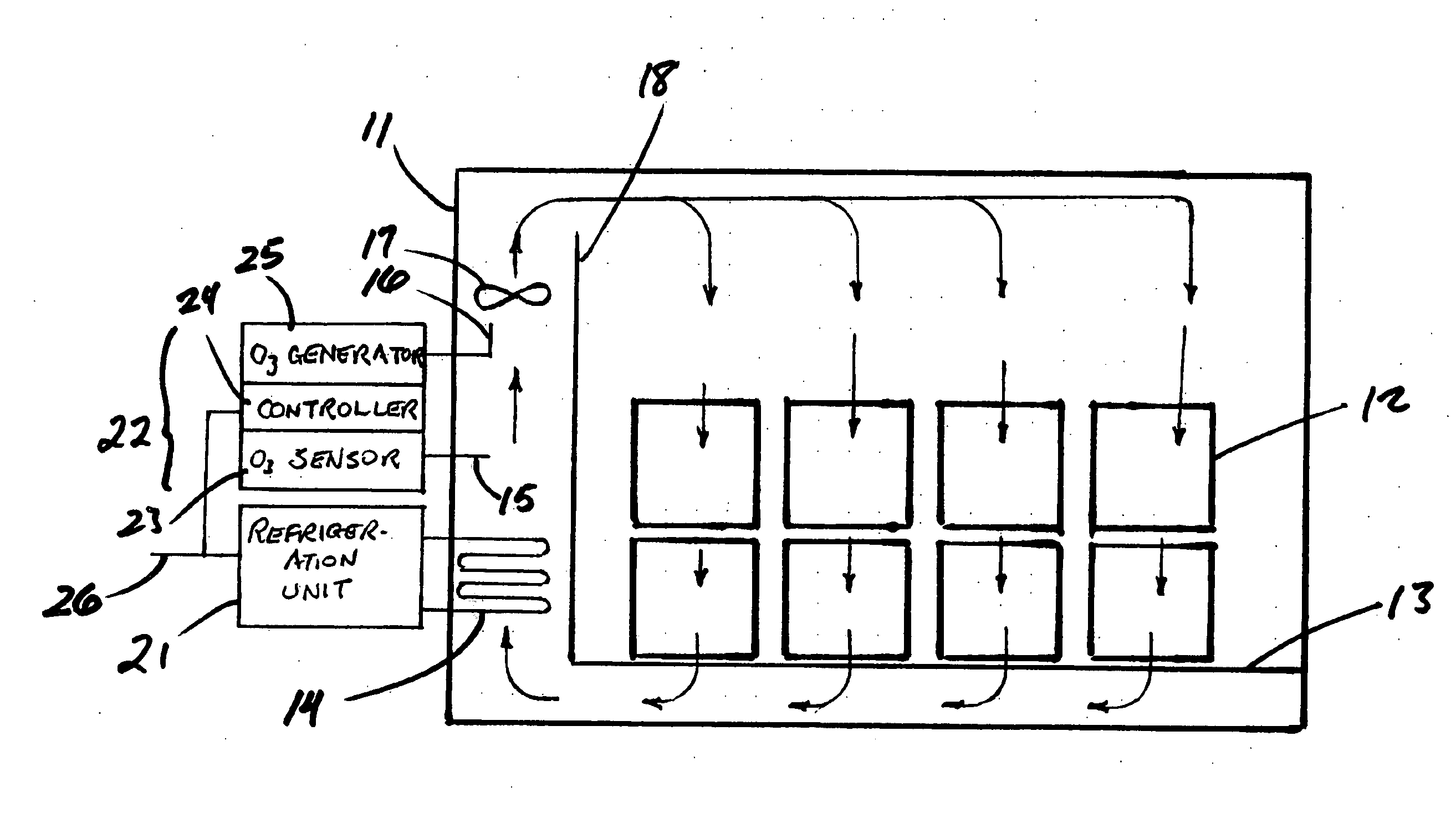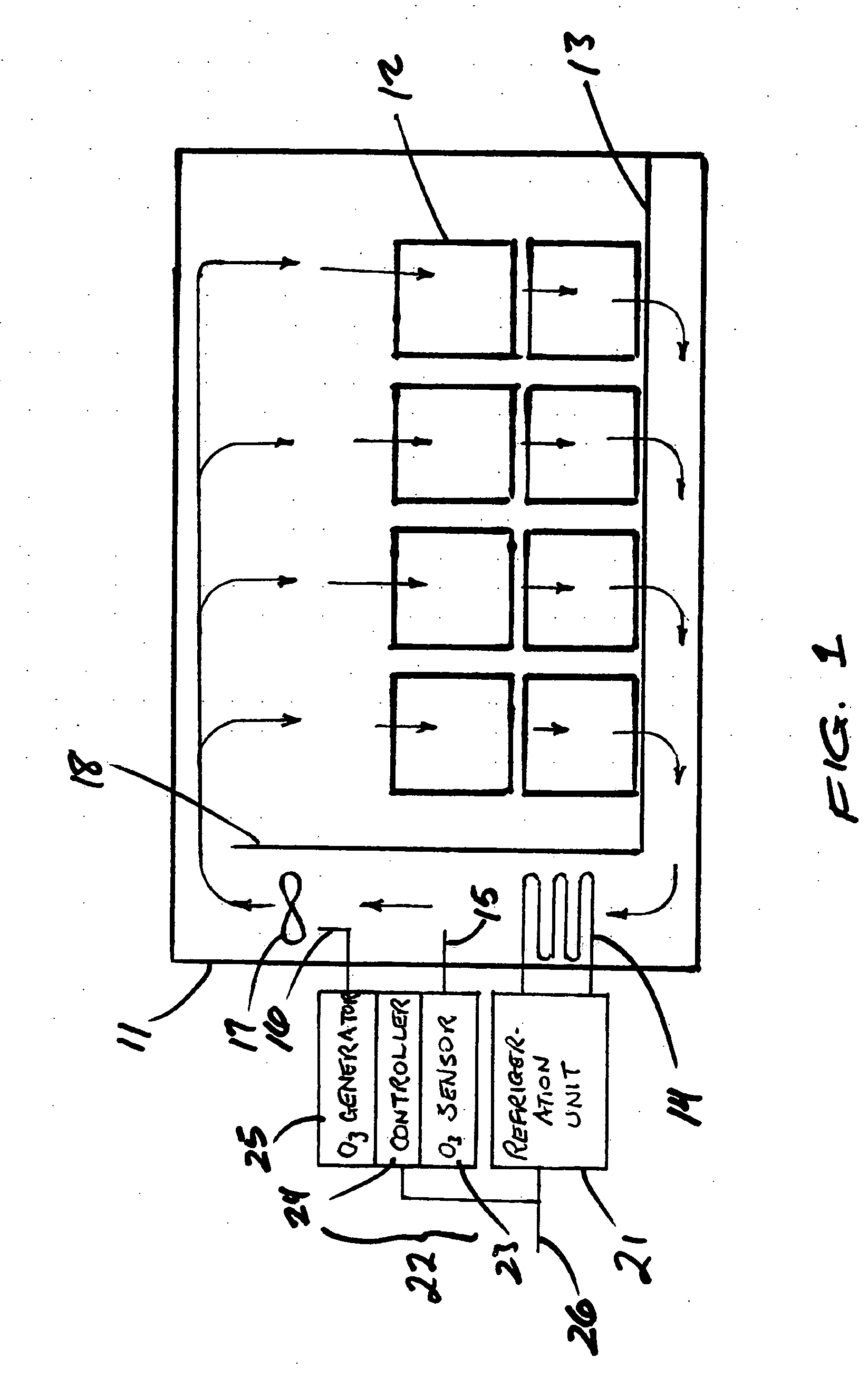Shipping container ozonation system
a technology for ozonation systems and shipping containers, applied in the field of refrigeration containers, can solve the problems of spoilage and rot of all products shipped worldwide, undesired ripening, and limited use effect of products
- Summary
- Abstract
- Description
- Claims
- Application Information
AI Technical Summary
Problems solved by technology
Method used
Image
Examples
Embodiment Construction
[0018]The present invention describes shipping containers that are useful in the transportation of any food products that are susceptible to spoilage over extended periods of time and for which the rate of spoilage can be reduced by refrigeration, ozone treatment, or both. While fruits and vegetables are of particular interest, the present invention may also be used with other products, including, but not limited to, fresh produce and other agricultural products, cooked foods, frozen foods (both cooked and uncooked) and other products and materials that will be readily apparent to one of skill in the food shipping industry.
[0019]The containers themselves can vary widely depending on the mode of transportation. Examples of containers include rail cars, truck trailers, and containers loaded on ocean-going ships. The present invention is particularly suited to containers that are fully self-contained, with the ozone sensor, controller, and injector either residing in the interior of th...
PUM
| Property | Measurement | Unit |
|---|---|---|
| volumetric flow rate | aaaaa | aaaaa |
| temperatures | aaaaa | aaaaa |
| ozone concentration | aaaaa | aaaaa |
Abstract
Description
Claims
Application Information
 Login to View More
Login to View More - R&D
- Intellectual Property
- Life Sciences
- Materials
- Tech Scout
- Unparalleled Data Quality
- Higher Quality Content
- 60% Fewer Hallucinations
Browse by: Latest US Patents, China's latest patents, Technical Efficacy Thesaurus, Application Domain, Technology Topic, Popular Technical Reports.
© 2025 PatSnap. All rights reserved.Legal|Privacy policy|Modern Slavery Act Transparency Statement|Sitemap|About US| Contact US: help@patsnap.com


